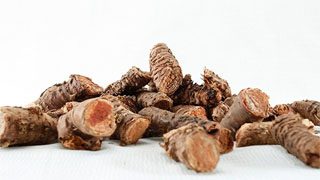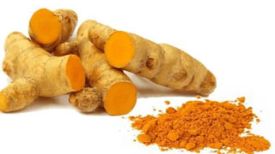
1. Alias
Kuye Hongjingtian, Gaoshan Hongjingtian, Xianci Grass.
2. Plant morphology
Perennial herb, 10-20 cm tall. The root is thick, conical, fleshy, brownish yellow, and has many fibrous roots at the neck. The rhizome is short, thick, cylindrical, and covered with mostly tiled, scaly leaves. Extract several flower stems from the leaf axis at the top of the stem, with fleshy leaves on both the upper and lower parts of the stem. The leaves are elliptical in shape, with coarse serrations on the edges, sharp tips, wedge-shaped bases, and few stems. The inflorescence grows at the top, with red flowers. Fruit pods.
3. Origin distribution
Except for a few species found in alpine grasslands and understory shrubs at an altitude of around 2000 meters, the majority of species are found on the edges of valleys, riverbank grasslands, glacier edges, rocky slopes, and swampy grassland edges in alpine grassland belts at an altitude of 3500-5600 meters. Has special adaptability to harsh and ever-changing natural environments. Distributed in Northeast, North, Southwest, and Northwest China. It is mainly produced in Jilin, Hebei, Gansu, Qingdao, Xinjiang, Sichuan, Yunnan, Guizhou, Xizang and other places.
4. Harvesting and processing
When the stems and leaves wither from July to September, dig them up, remove the remaining stems and soil, and dry or directly sun dry them. It is not suitable to harvest in spring. The content of salidroside in the early stage of germination and flowering in spring is 50% of that in the flowering and fruiting stage.
5. Characteristics of medicinal herbs
The surface of the rhizome is reddish brown, with a main root length of 20-50 centimeters and a thickness of 1-4.5 centimeters, forming an irregular conical shape. The top of the rhizome has many clustered branches and dried apical buds, presenting a distinct "lion head" shape. Has an indistinct rose aroma and a noticeable astringency upon tasting. It is best to use rhizomes with multiple branches, uniform thickness and length, strong color and flavor, no other impurities, dryness, and a single plant weight of 40 grams or more.
6. Sexual Taste Returning to the Classics
Flat in nature, sweet and bitter in taste. Return to the lung meridian and heart meridian.
7. Effect and Function
Tonifying qi and activating blood circulation, promoting pulse circulation and relieving asthma. It belongs to the category of Qi tonifying drugs under the category of tonics.
8. Clinical application
Take 9-12 grams of decoction orally, used for Qi deficiency and blood stasis, chest tightness and heartache, stroke hemiplegia, fatigue and asthma.
9. Pharmacological research
The extract can increase the activity of SOD in rat red blood cells and liver, and reduce the content of LPO in plasma, myocardium, and brain tissue.
10. Chemical composition
It mainly contains salidroside, aglycone tyrosol, black ant, safflower aldehyde, caffeic acid, kaempferol, ethyl gallate, β - sitosterol, dibutyl phthalate, palmitic acid, coumarin, salidroside, 17 amino acids needed by the human body, 21 trace elements, multiple vitamins, volatile oils, flavonoids, sterols, organic acids and other components.
11. Usage taboos
Children and pregnant women should use with caution.
12. Compatibility prescription
① 6 grams of Rhodiola and 50 grams of japonica rice. First use Rhodiola decoction to remove the residue, and then add rice to cook Congee. Congee is seasoned with appropriate sugar. Health preservation, anti-aging and anti-aging. Can be taken regularly as a health food.
② Take 5 grams of Rhodiola rosea and soak it in water as a tea drink. Nourish and strengthen. It is used for the auxiliary treatment of senile heart failure, diabetes, neurosis, anemia, liver disease, etc.
③ 30g of Rhodiola rosea, ground into flour, packaged in capsules, each containing 0.2g of raw medicine, 2-3 capsules per session, taken 3 times a day. Nourishing and strengthening, promoting health and wellness. Suitable for people with physical weakness, old age, and physical decline.
④ An appropriate amount of fresh Rhodiola rosea, mashed and applied externally, can promote blood circulation, stop bleeding, detoxify and reduce swelling. Used for pain caused by burns, bruises, and injuries from falls.
⊙ The content of the article is for clinical reference only. Non TCM professionals are not allowed to test drugs.


